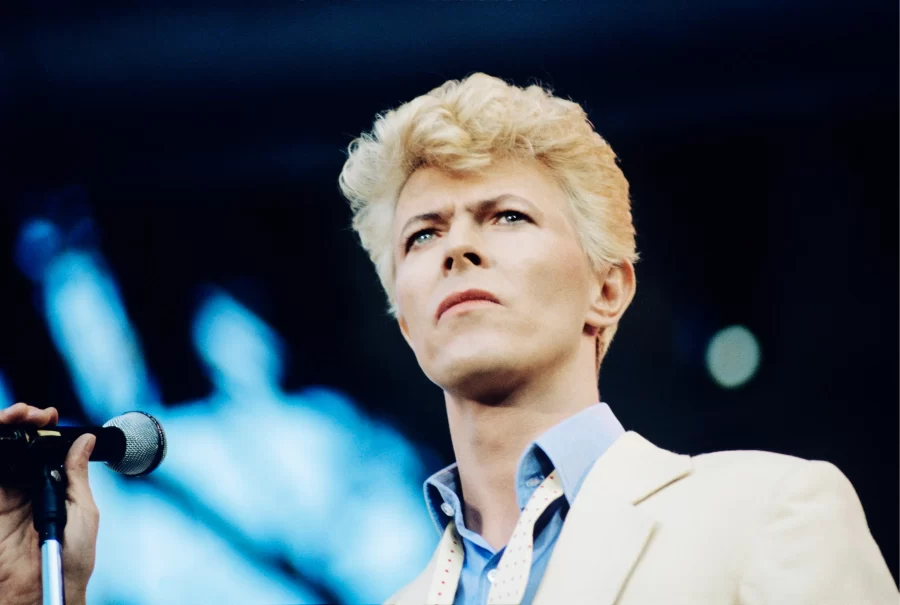“Moonage Daydream” redefines the modern music documentary
Claire Schuppel reviews “Moonage Daydream” a documentary about music legend and cultural icon David Bowie.
Sep 22, 2022
A strong documentary is able to contain the essence of an individual within a brief period of time. “Amy” and “Free Solo” are recent examples of exceptional representations of one’s story. Rock legend David Bowie became the topic of a new documentary, “Moonage Daydream,” released Sept. 16. The film encapsulates Bowie’s persona and talent well.
Before discussing the content of the documentary, it is important to point out the obvious: the style of this movie is flashy, in your face and a perfect visual representation of Bowie. There are montages throughout the movie that feature retro futurism similar to “The Jetsons,” clips from his films, flashing lights, bright colors, images of the moon and much more. The maximalist look fit the IMAX screen well, and while it could be overstimulating to some, it matches the themes of Bowie’s boisterous music well.
The documentary gives a rough timeline of Bowie’s life and career in the music industry. While it is a relatively nonlinear way of storytelling, there is still a cohesiveness that shows his highs and lows through life.
A unique feature of the documentary was that the entirety of Bowie’s life was told with his own voice. Through archival footage and interviews, he shared his difficult upbringing, his struggles with relationships, his musical influences and philosophical views. It was a refreshing take on the usual format, where others share their two cents on the subject. There is no use of orthodox narrative techniques, making the meaningfulness of the words that much stronger.
The narrative was also original because the life of Bowie was not explicitly discussed, but instead we saw what was happening via the vast amounts of archive footage available. A strong example of this was when the film dived into Bowie’s experience living in Los Angeles. He was in the throes of drug addiction, living in a place that brought out the worst in him. The filmmakers were able to capture this through fast camera cuts between LA streets, showing struggles of overindulgence and interview clips where Bowie was struggling to string together his thoughts. This was significantly more effective than an outsider talking about a second-hand experience with Bowie’s struggles in the city.

The use of music is nothing less than extraordinary. With the entirety of Bowie’s discography available, the selected tracks were curated specifically for the timeline. One would expect that the songs would be played in order of release, but the movie ended with “Memory of a Free Festival” from his 1969 self-titled album, for example. The music played over certain montages, such as “Word on a Wing” during the segment on Bowie’s relationship with his wife, Iman. Live performances were also shown throughout, which were beautifully filmed and showed Bowie over his 50 year career.
An area where the movie does fall flat is its accessibility to a general audience. If you go into the experience with no background information on Bowie, there might not be as much information you can take away after. As a hardcore Bowie fan, I found the experience to be fulfilling and informative on how he viewed human nature, spirituality, music creation and many other areas.
Glam rock fans everywhere will thoroughly enjoy this sensational experience, as it pays homage to Bowie in a perfect, abstract manner. It is a philosophical joyride guided by Ziggy Stardust himself. Bowie was larger-than-life, and the filmmakers put in the time to match “Moonage Daydream” to his magnificent image.













